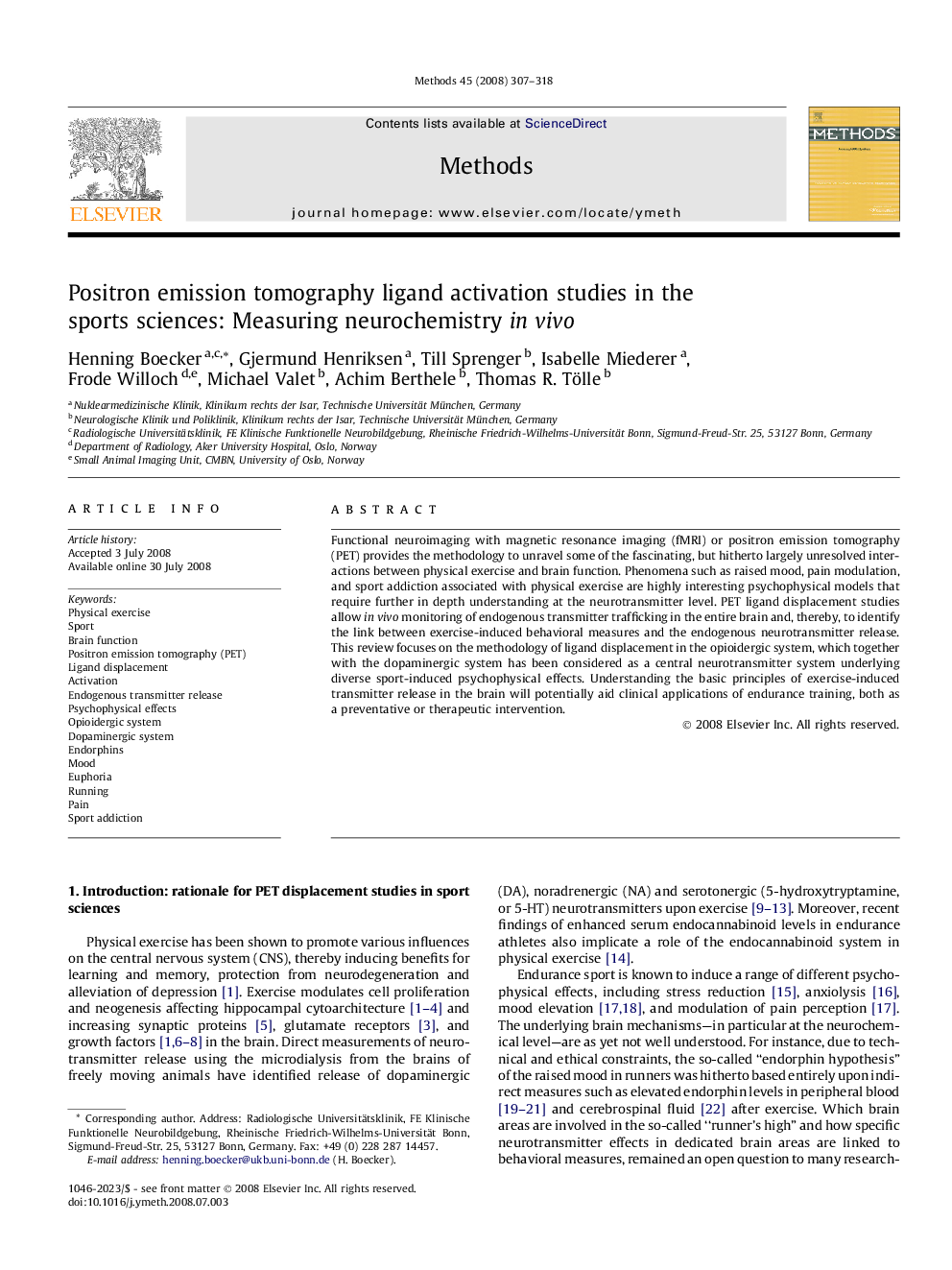| Article ID | Journal | Published Year | Pages | File Type |
|---|---|---|---|---|
| 1994344 | Methods | 2008 | 12 Pages |
Functional neuroimaging with magnetic resonance imaging (fMRI) or positron emission tomography (PET) provides the methodology to unravel some of the fascinating, but hitherto largely unresolved interactions between physical exercise and brain function. Phenomena such as raised mood, pain modulation, and sport addiction associated with physical exercise are highly interesting psychophysical models that require further in depth understanding at the neurotransmitter level. PET ligand displacement studies allow in vivo monitoring of endogenous transmitter trafficking in the entire brain and, thereby, to identify the link between exercise-induced behavioral measures and the endogenous neurotransmitter release. This review focuses on the methodology of ligand displacement in the opioidergic system, which together with the dopaminergic system has been considered as a central neurotransmitter system underlying diverse sport-induced psychophysical effects. Understanding the basic principles of exercise-induced transmitter release in the brain will potentially aid clinical applications of endurance training, both as a preventative or therapeutic intervention.
